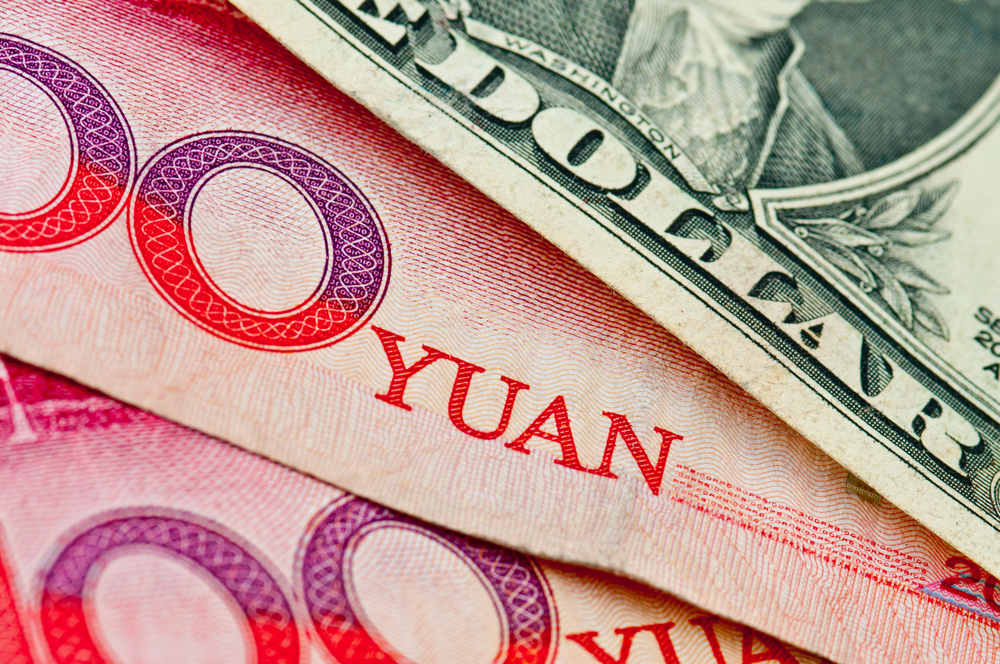China reported its fourth-quarter GDP yesterday — growth of 6.8%. Nobody freaked out; China’s market collapse, long foretold, didn’t happen. Even China-centric commodities shrugged it off, with copper, aluminum, zinc and iron ore moving higher.
Simply put: China, despite all the hand-wringing and consternation in the media, is not a basket-case economy on the verge of implosion. It’s following the early stages of the path I predicted back in August, when China depreciated its currency, the yuan, causing commentators around the world to cry that China’s market collapse was nigh!
Of course, China’s market collapse was never in the cards. And recent data show that. It reaffirms what I’ve been writing for the last six months: There exists a good possibility that China surprises to the upside when the dollar weakens … and when that happens, the negative sentiment that has washed over the world, particularly emerging-market economies, will reverse.
Below the surface — meaning below the headline GDP numbers — China’s economy is mending. Parts of the economy — namely, the consumer — were never hurting.
Here’s what I mean:
- Chinese retail sales were up 11% in December, clear indication that the Chinese consumer is just fine.
- Real estate, though bubblicious in some markets no doubt, saw sales rise nearly 17% for 2015. And far from racing toward collapse, China’s property sector is stable, says Moody’s, the debt-rating service.
- Though still weak, the country’s non-manufacturing index, gauging economic activity beyond the factory floor, is rising. Same with industrial production.
- And in the last couple of weeks, China’s manufacturing sector edged higher.
The reason: China devalued the yuan back in August.
This is the early sign of what I said to expect.
Until recently, China had pegged the yuan to the dollar, meaning that as the dollar rose in value against the rest of the world’s currency, so too did the yuan … which meant Chinese goods grew increasingly less competitive globally with every uptick in our buck. Which means that the Chinese economy has loosely followed the dollar. When the dollar weakened, China’s GDP grew at a faster pace; when the dollar strengthened, China’s GDP grew at a slower pace.
The impact of depreciating the yuan is early proof of that.
But instead of waiting for the dollar to decline on its own, China reduced ties to the buck by tying the yuan to a basket of currencies and it proactively depreciated the currency. And, voila, economic activity in the key industrial and manufacturing sectors began to turn higher. In fact, China outpaced two of its key competitor economies: South Korea and Taiwan.
Expect to see more of this in coming months.
China: The Misunderstood Giant
China will continue to purposefully depreciate the yuan, which will make Chinese products increasingly more competitive globally, which will reenergize the Chinese economy. We will see GDP growth north of 7% again. Possibly even 8% (in fact, I have a bet — a 1-ounce gold coin — that China will post an 8% GDP again as the dollar weakens).
China’s problem isn’t as much a “China problem” as it is a “Federal Reserve problem.” The Fed, through the incessant talking of hawkish Fed governors and Janet Yellen, has talked the dollar higher on nothing more than words. The U.S. economic data certainly do not support a higher dollar, which I’ve written about many times in recent months.
But Wall Street has been whining so long and so loudly about wanting rates off the zero-bound that the Fed allowed one or two purportedly “good” jobs reports to sway their judgment. (And the reports were not so good, as I’ve written about here.)
I am convinced the Fed will change its mind over the course of 2016 and we see a move to cut rates. Every central bank in the world that has raised rates in recent years had to reverse its decision. The Fed, with models that have clearly not worked so well, is not so exceptional that it can buck that trend.
Normally, I’d say if the dollar is falling you want to own the opposing currency … but in this case, China is proactively taking the yuan down, so I would not be a yuan buyer at the moment. But I would own a basket of Hong Kong stocks, such as the iShares MSCI Hong Kong ETF (NYSEARCA: EWH).
As China’s GDP surprises in coming quarters, sentiment toward China will improve and that will flow through Hong Kong, the key Western gateway to China. The Hong Kong exchange-traded fund (ETF) has fallen 23% since last May. The P/E ratio is a paltry 8. Price-to-book is barely above 1 (which is relatively cheap). And the yield is north of 2.2%. It’s a very good way to own exposure to China’s GDP through a safe market that adheres to the same kind of securities standards that are common in the U.S. and the U.K.
China is a misunderstood giant, even among the Chinese. But one thing is clear: The Chinese economy waxes and wanes on the U.S. dollar. China is breaking that tradition, even as the dollar is on the cusp of a reversal. Both trends will benefit Chinese GDP in coming quarters, which means now is a good time to own Hong Kong on the cheap.
Until next, stay Sovereign…
Jeff D. Opdyke
Editor, Profit Seeker
